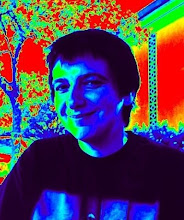The road to Isfahan

It's already over a year since I was last in Isfahan. Dusk in the Imam Square steaming with life, with its restaurants, cafes, with family picnics on the grass, people eager to talk of life. Bright morning sunshine in the Friday Mosque, the prodigy of architecture and sufi metaphysics, muqarnas and designs of light, of sharp contrasts shade and brightness. Its recesses merging with the dark alleys of the bazar, its brightness with the sky. Rolling of prayer carpets in the Imam Mosque and domes like turquoise sails in a warm caress of wind. Isfahan of architectural wonders and nuclear experiments, Isfahan the magnificient between mountain and desert.

Shortly before that trip I had been in France and I happened upon the novel by Gilbert Sinoue' "Avicenne ou la route d'Ispahan". I was on my own road to Isfahan at the time and so I indulged in the reading of the story of Abou Ali ibn Sina, the scientist, physician and philosopher who became known to the West as Avicenna. The story is written as an account by his disciple, Abou Obeid el-Jozjani, who followed the master for twenty five years, in his wandering at the service of the various emirs of the caliphate, amids court intrigues, wars and calamities. It is a touching portrait of a brilliant scientist, forced to endless peregrination and exile, always on the road between blood stained past and uncertain future. The character of Ibn Sina himself reflects so many characters of the successful scientists of today, including the childish desire to be "first in everything", the difficult relation to love, until the final tragic encounter with the mysterious Yasmina. This is not a love story, don't worry. It is the story of a time of scientific splendor, with its many intricacies. It io the story of Ibn Sina, the initiator of modern medicine, of al-Biruni the mathematician, and of the wonders of the Islamic Renaissance, which was as culturally sublime and as tormented a period of history as the later European Renaissance was bound to be a few centuries later. From the early education in Bukhara, to his death on the road to Isfahan, across modern Uzbekistan, Afghanistan and Iran, the road and the life unfold and mirror the patterns of the land, high mountain ranges, desert storms and earthquakes. Fine writing and a very fine choice of subject.
I am still wondering how it happened that I got so involved with middle eastern affairs in such a short time. That part of the world had never really been a part of my horizon, confined for so many years within the blocks of the Cold War and wenturing only as far as Mother India, champion of the non-aligned world, lingering on the fringes of the Soviet influence. The world has changed far more rapidly with the turn of the century than in the previous ten years of mulling over the departed communist block, years I spent mostly in the US, slowly trying to forget the other half that failed. Maybe it is because of the time I spend now more frequently on the other side of the Atlantic, hopping around the immense Eurasian land mass, that I started to get involved. Maybe it is because the world is getting claustrophobically narrow and the rumble of war is roaring closer and louder. I went in the span of a few months from hardly knowing anybody from that large stretch of the world that stretches between the Bosphorus and the Himalayas to having a rapidly growing number of friends from a number of thos countries, with varying degrees of prosperities and perspectives. Largely it is young students and postdocs: scientists in the making, ready to ride the tide of rapid scientific development of countries like Iran, or trying to keep the enthusiasm for science and research alive in the rubble of ravaged Iraq, seeking an access route to the Western lands of scientific opportunity and technological plenty.

In this week's issue the journal Nature publishes a sombre report on science and development in Islamic countries, from Africa all the way to Mayasia. I report below (many excuses to Nature) the graph of the number of scientific publications by countries. One can clearly distinguish skyrocketing Turkey and Iran, with the rest dragging behind, if not altogether dropping out of the map of scientific enterprise.
Who is to blame? Government spending in research and development far lower than in other countries with similar income and economies, importing of ready-made technology as a substitute for a strong local scientific community. The list is long. Go back and read Abdus Salaam, his musing on science and Islam, his dreams about science and development, his warnings on exactly the issues that are being discussed today. "What should be done?" a good old question, comrade Lenin. Yes, what should we do with the world of today?
"Seek knowledge, even as far as China" (the Prophet)


